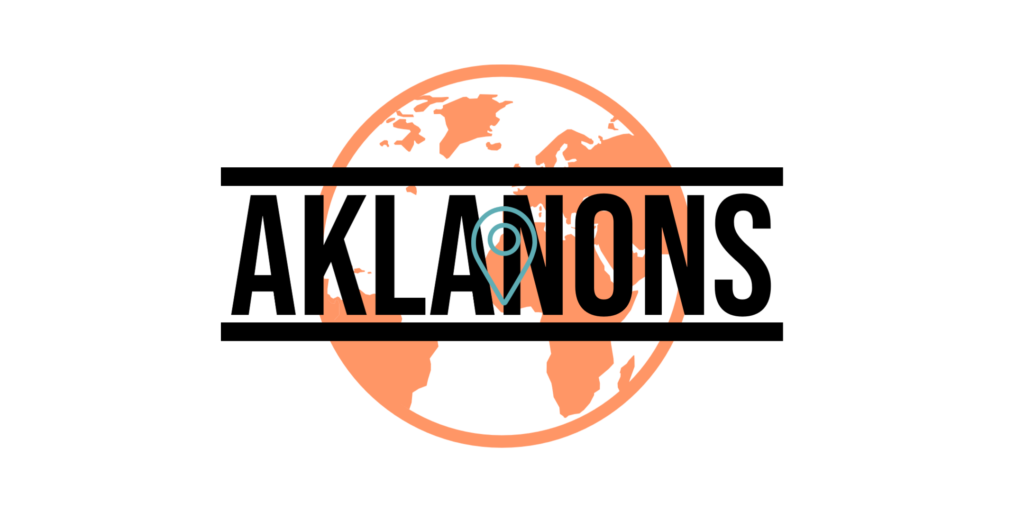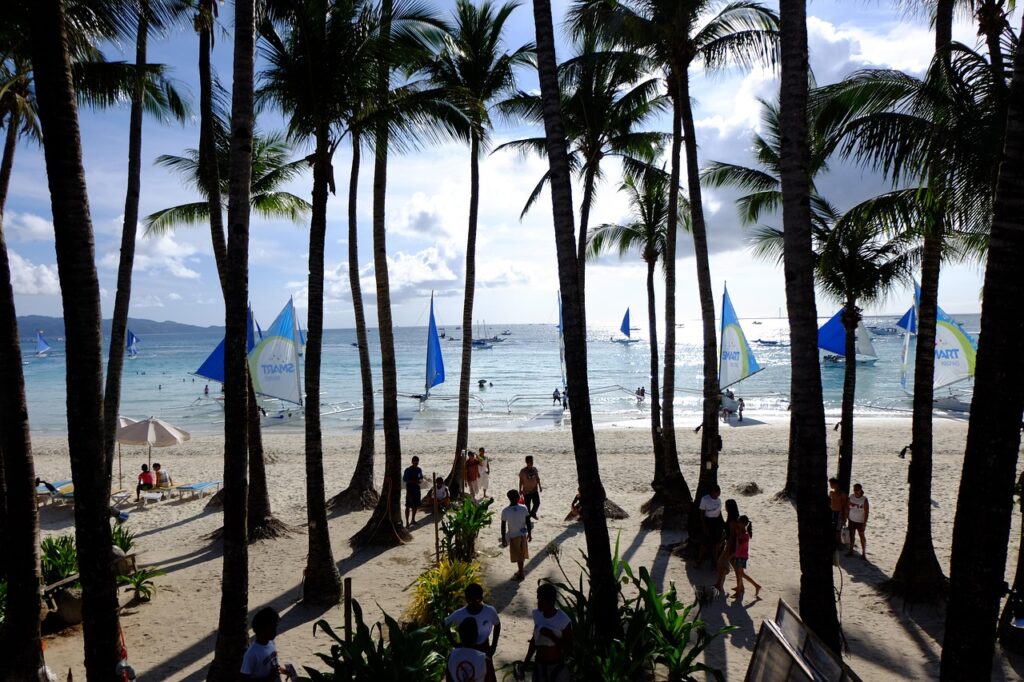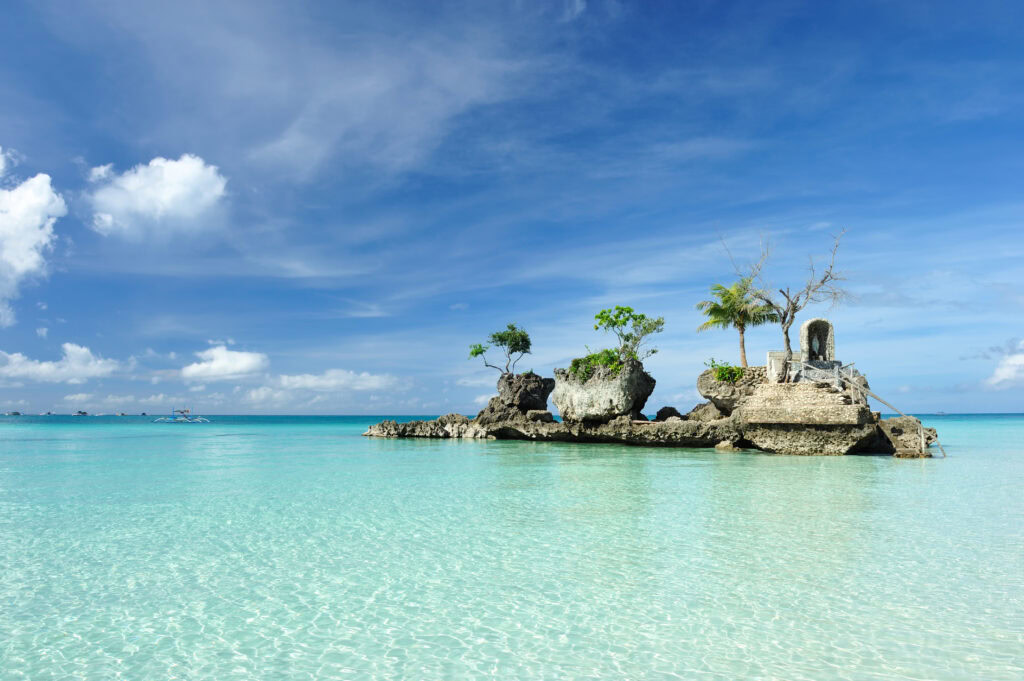
Aklan Unveiled: A Comprehensive Guide to the Philippines’ Oldest Province, Its People, Culture, and Paradise Isles
I. Introduction: Beyond Boracay – Discovering Aklan’s Enduring Charm
Aklan, situated in the Western Visayas region of the Philippines, holds a unique and significant place in the nation’s history as its oldest province. Its origins trace back to as early as 1213, established by settlers from Borneo as the “Minuro it Akean”. This deep historical lineage distinguishes Aklan as far more than merely the primary gateway to the globally celebrated Boracay Island. The province officially gained its independence from Capiz on April 25, 1956, following the signing of Republic Act 1414 by President Magsaysay, and was inaugurated on November 8, 1956.
Geographically, Aklan encompasses the northwestern portion of Panay Island and includes the renowned Boracay Island, covering an estimated land area of 181,789 hectares. Its borders are defined by the Sulu Sea to the northwest, the Sibuyan Sea to the northeast and east, Antique province to the west, and Capiz province to the south. This diverse geographical setting, coupled with its rich cultural tapestry and the warmth of its inhabitants, presents a multifaceted destination. This article provides a comprehensive exploration of Aklan, examining its demographic landscape, unique linguistic characteristics, vibrant local culture, distinctive culinary traditions, the charm of its various towns, the enduring allure of Boracay, and essential travel infrastructure.
II. Aklan at a Glance: Geography, Demographics, and Economy
A. Geographical Heartbeat: A Land of Diverse Landscapes
Aklan’s physical terrain is remarkably varied, featuring extensive coastal plains, undulating hills, fertile river valleys, and rugged mountainous interiors. This topographical diversity provides a foundation for both rich biodiversity and robust agricultural productivity. The province is predominantly mountainous, with over one-third of its land area exhibiting an average slope of 30 percent. Notably, Aklan is one of the few provinces in the Philippines that still preserves a significant expanse of virgin forest, totaling approximately 709 hectares.
Prominent natural features include the Aklan River, recognized as one of the cleanest rivers in the country, which meanders for about 60 kilometers from Capiz to its mouth in Kalibo. The Ibajay River, flowing over 30 kilometers from Madalag to Ibajay, is another major river system. The province’s coastline extends for approximately 155 kilometers, touching 10 municipalities and 73 barangays, and is defined by two significant features: Batan Bay in the southeast and the iconic Boracay Island at the northern tip of Panay. The plains, covering about 100 square kilometers, encompass central towns like Malinao and Banga, and western coastal towns such as New Washington, Kalibo, and Makato. Additionally, marshlands span over 50 square kilometers along the coastal areas.
The varied geography of Aklan directly influences its economic activities and tourism potential. The presence of virgin forests and pristine rivers suggests opportunities for eco-tourism that extend beyond traditional beach destinations. Coastal areas naturally support fishing and marine-based tourism, while the mountainous terrain is conducive to specific agricultural products and traditional crafts. This inherent diversity allows Aklan to offer a broader spectrum of experiences to visitors, which can contribute to a more resilient and multi-faceted economic base, reducing over-reliance on a single attraction like Boracay.
B. The Pulse of the Province: Population Snapshot
Understanding the demographic composition of Aklan provides crucial context for its social and economic dynamics. As of May 1, 2020, the total population of Aklan reached 615,475, according to the 2020 Census of Population and Housing conducted by the Philippine Statistics Authority. This figure represents approximately 8 percent of the total population in Western Visayas.
The province has experienced consistent population growth. Between 2015 and 2020, Aklan’s population increased by 40,652 individuals, rising from 574,823. This translates to an annual population growth rate (PGR) of 1.45 percent, an acceleration from the 1.35 percent PGR recorded during the 2010 to 2015 period.
Population distribution varies significantly across Aklan’s 17 municipalities. Kalibo, the provincial capital, held the largest population in 2020 with 89,127 residents, marking an increase of about 8,522 persons from its 2015 count. Following Kalibo in population size were Malay (60,077), Ibajay (52,364), New Washington (47,955), and Nabas (40,632). Collectively, these five municipalities accounted for approximately 47.14 percent of Aklan’s total population in 2020. In contrast, Lezo (15,639) and Madalag (18,890) recorded the smallest populations. At the barangay level, Manoc-Manoc in Boracay Island, Malay, was the most populous with 20,504 residents.
Further demographic details from 2020 reveal that males constituted 51.0 percent (313,737 individuals) of the total population, while females accounted for 49 percent (301,738 individuals), resulting in a sex ratio of 104 males per 100 females. Madalag and Malay exhibited the highest sex ratio (108 males per 100 females), whereas Kalibo and Numancia had the lowest (101 males per 100 females). Analysis of age distribution indicates that men generally outnumber women in younger age groups (e.g., 10-49 years), but this trend reverses in older age groups (60 years and over), where there were only 74 men for every 100 women. This pattern suggests that the male population in Aklan was generally younger than the female population in 2020.
The 2020 Census also reported a dependency ratio of 56, meaning there were 56 dependents for every 100 working-age individuals. Women exhibited a higher dependency ratio (59 female dependents per 100 working-age females) compared to men (54 male dependents per 100 working-age males), indicating a smaller proportion of women within the working-age group. In terms of marital status, among never-married persons aged 10 years and over, 45 percent were women. While more men than women were recorded as never-married below 60 years old, this trend reversed for seniors aged 60 and above, where women comprised 64.7 percent of never-married seniors, highlighting a higher prevalence of singlehood in later years among women. The proportion of Aklan’s household population with registered births stood at 98.4 percent.
Educational attainment data from 2020 shows that women aged 5 years and over had a higher basic literacy rate of 96.9 percent, compared to men of the same age group, who recorded 96.5 percent. This higher literacy rate among women was consistent across all age groups. Furthermore, while the majority of both men (38.6%) and women (37.2%) attained a high school education, a notably higher proportion of women pursued college education (26.0% of women compared to 20.7% of men). More women also completed a college degree (17.4% of women versus 12.9% of men) and pursued postgraduate education, with a higher number obtaining master’s and doctorate degrees.
The increasing population growth rate, particularly in municipalities like Kalibo and Malay, suggests a growing demand for resources and infrastructure. The demographic patterns, including the higher educational attainment and literacy rates among women, point to a significant societal evolution. This development could lead to a more skilled and educated female workforce, potentially reshaping economic and social dynamics within the province. However, the higher dependency ratio for women and the prevalence of singlehood among older women also highlight areas where social support systems may need to be strengthened to ensure equitable development and well-being for all segments of the population.
Aklan Province Population (2020 Census) by Municipality
| Municipality | 2020 Population | 2015 Population | Population Change (2015-2020) | Annual Population Growth Rate (PGR) |
| Kalibo (Capital) | 89,127 | 80,605 | 8,522 | 2.14% |
| Malay | 60,077 | 52,367 | 7,710 | 2.76% |
| Ibajay | 52,364 | 49,522 | 2,842 | 1.18% |
| New Washington | 47,955 | 45,007 | 2,948 | 1.34% |
| Nabas | 40,632 | 36,435 | 4,197 | 2.36% |
| Numancia | 35,693 | 31,934 | 3,759 | 2.30% |
| Makato | 29,717 | 27,262 | 2,455 | 1.83% |
| Libacao | 28,272 | 28,243 | 29 | 0.02% |
| Malinao | 24,517 | 23,047 | 1,470 | 1.31% |
| Tangalan | 23,704 | 21,916 | 1,788 | 1.69% |
| Altavas | 25,639 | 24,097 | 1,542 | 1.32% |
| Banga | 40,318 | 39,505 | 813 | 0.42% |
| Batan | 33,484 | 32,034 | 1,450 | 0.94% |
| Balete | 30,090 | 28,920 | 1,170 | 0.84% |
| Buruanga | 19,357 | 16,923 | 2,434 | 2.87% |
| Madalag | 18,890 | 18,389 | 501 | 0.57% |
| Lezo | 15,639 | 15,224 | 415 | 0.57% |
| TOTAL AKLAN | 615,475 | 574,823 | 40,652 | 1.45% |
Source: Philippine Statistics Authority – Region VI
C. Economic Foundations: A Blend of Tradition and Tourism
Aklan’s economy is a dynamic mix of traditional livelihoods and a rapidly expanding tourism sector. Historically, agriculture has formed the backbone of the province’s economy, with palay (rice) being the leading agricultural product. Other significant crops include corn, coconut, and abaca. Small-scale industries play a vital role, particularly piña cloth weaving, which produces the exquisite “Queen of Philippine Fabrics,” making Aklan the primary producer in the country. Other traditional crafts include abaca and bamboo handicraft, pottery making, and the production of “ampaw” (pop rice). Fishing, both from fishponds and offshore, also provides substantial employment.
The tourism industry has emerged as a dominant force, consistently contributing significantly to the national economy. In 2014, Aklan welcomed 1.6 million tourist arrivals, generating over 40 billion pesos in tourist receipts. This sustained influx of visitors directly translates into job creation and employment generation, aligning with national goals of poverty alleviation and inclusive growth.
Recent economic data further underscores this shift. The Gross Domestic Product (GDP) of Aklan demonstrated robust growth, increasing by 22.5 percent in 2022 and 9.5 percent in 2023, reaching P69.61 billion. Among 16 industries, wholesale and retail trade, along with auto repair and motorbikes, accounted for the largest share of the province’s economy at 22.3 percent. Transportation and storage contributed 18.0 percent, while agriculture, forestry, and fishing comprised 11.1 percent. Notably, accommodation and food service activities recorded the fastest growth rate at an impressive 58.9 percent. However, the agricultural sector experienced a contraction of 4.6 percent.
The economic data clearly indicates a significant transition towards a service-oriented economy, largely propelled by the tourism sector. While agriculture remains a foundational element, the rapid expansion of wholesale and retail trade, transportation, and particularly accommodation and food services, highlights tourism’s profound impact. This economic transformation means that Aklan is effectively leveraging its natural beauty and cultural heritage to stimulate growth. However, the contraction observed in agriculture suggests a need to ensure a balanced approach that supports traditional livelihoods while continuing to foster the burgeoning service sector, thereby promoting equitable development and food security across the province. The emphasis on high-value crafts like piña weaving provides a valuable pathway for traditional industries to integrate with and benefit from the tourism economy.
III. The Soul of Aklan: Language and People
A. Akeanon: The Language of the Land
The linguistic landscape of Aklan is primarily defined by Akeanon, also known as Inakeanon, the native tongue of the Aklanon people. This Austronesian language belongs to the Bisayan subgroup and is spoken not only in Aklan but also in parts of northwestern Capiz, northern Antique, and southern Romblon.
Akeanon possesses distinct phonetic characteristics that set it apart from other Bisayan languages. A unique feature is the close-mid back unrounded vowel [ɤ], which is traditionally represented by the letter combination ‘Ee’ in words such as ‘Akean’ and ‘Akeanon’. Another notable characteristic is the digraph ‘ea’, where the ‘l’ sound is pronounced with a rolling ‘r’. This distinctive pronunciation is said to have originated from a legend involving Datu Bangkaya, an ancient ruler of Aklan, who reportedly had a short tongue and could not pronounce the ‘l’ sound clearly. The Malaynon dialect, closely related to Akeanon, shares a 93% lexical similarity and notably retains the ‘l’ sounds that are often pronounced as ‘r’ elsewhere in Aklanon.
Aklanon has 21 phonemes, comprising 17 consonants and 6 vowels. The three native vowels are i, a, and u, with e and o typically used for loanwords and common nouns. Aklanons frequently employ linguistic shortcuts in their daily speech, combining or shortening words, which are readily understood by native speakers. For instance, “Siin imo nga…” (Where is your…) might become “Siin imong…” or “Siin ing…”.
Beyond Akeanon, the people of Aklan are often multilingual, also speaking English, Tagalog, Hiligaynon, and Cebuano. English is particularly prevalent and widely understood, especially in areas frequented by tourists. This linguistic diversity is a significant advantage for the province, as it facilitates communication with both domestic and international visitors, thereby enhancing the overall tourist experience and potentially attracting foreign investment. The distinctiveness of Akeanon, with its unique sounds and historical origins, serves as a powerful cultural identifier that can be showcased and promoted as an integral part of the Aklanon cultural experience.
Essential Akeanon Phrases for Travelers
| Akeanon Phrase | Malaynon Equivalent | English Translation |
| Hay | Hay | Hi/Hello |
| Mayad-ayad nga agahon | Mayad nga agahon | Good morning |
| Mayad-ayad nga hapon | Mayad nga hapon | Good afternoon |
| Mayad-ayad nga gabi-i | Mayad nga gabi-i | Good night |
| Saeamat | Salamat | Thanks |
| Mayad man | Mayad man | I am fine |
| Pangabay | Pangabay | Please |
| Hu-o | Hu-o | Yes |
| Bukon/ayaw/indi | Bukon/indi | No |
| Owa tang kaeobot | Uwa takon kaeubot | I do not understand |
| Owa tang kasayud | Uwa takon kasayud | I do not know |
| Ano ing pangaean? | Ano imong ngaean? | What is your name? |
| Siin ka gaadto? | Diin ‘kaw maayan? | Where are you going? |
| Anong oras eon? | Anong oras eon? | What time is it? |
| Tig-pila ea? | Tag-pila dya? | How much is this? |
| Kagwapa ka gid-ing | Inay nga gwapa guid imo | You are beautiful |
| Kabuot ka gid-ing | Kabuoton guid imo | You are kind |
| Ta eon | Mus ta | Let’s go |
| Gutom eon ako | Gutom akon | I am hungry |
| Kanami eo pagkaon | Sadya ang pagkaon | The food is delicious |
Source: Aklanon language, Akeanon phrasebook
B. The Aklanon People: A Tapestry of Culture and Tradition
The Aklanon people, the main inhabitants of Aklan province, are part of the larger Visayan ethnic group. Other indigenous groups present include the Negrito, locally known as the Ati, and the Sulod, a lesser-known tribal group residing in the hinterlands of Panay. Other Visayan groups such as the Karay-a, Hiligaynon, and Capiznon also reside in the province. The Aklanon are descendants of Austronesian-speaking immigrants who arrived in the Philippines during the Iron Age.
Aklanon culture is vividly expressed through its traditions, festivals, clothing, food, and marriage customs. Historically, Aklanons engaged in farming, fishing, and craft-making, trading goods like rice, corn, cotton, and abaca. They possessed a stratified social structure led by datus, who were also feudal lords and masters. Music and dance were well-developed, encompassing courtship songs (kundiman), wedding hymns, and funeral recitals. Traditional dances include Binanog, Panagaytay, Inagong, Sotes, Pahid, Patadyong Dance, and Nigo Dance. While tattooing was historically practiced, including henna, it was largely abandoned during the Spanish era, though a revival has been observed in Boracay due to its tourism popularity.
Vibrant Festivals: The Ati-Atihan Festival, held annually in Kalibo, Aklan, is arguably the most famous and celebrated event, widely regarded as “The Mother of all Philippine Festivals” and the “Filipino Mardi Gras”. This week-long celebration culminates on the third Sunday of January, honoring the Santo Niño (Infant Jesus). Its origins trace back to a 13th-century peace agreement between early Negrito settlers (Ati) and Malay newcomers, where the Ati granted land to the Datus from Borneo. To commemorate this, participants blacken themselves with soot and don colorful tribal costumes, mimicking the Ati. The festival features tribal dance, music, indigenous costumes, and weapons, with parades along the streets. Christians and non-Christians alike observe this day with religious processions, including the “Paeapak,” a unique healing tradition. Other significant festivals include the Bariw Festival in Nabas, showcasing weaving skills, the Aklan Piña and Fiber Festival promoting loom-weaving, and the Kalibo Food Festival. The province also commemorates the heroism of the 19 Martyrs of Aklan every March 23rd, who sacrificed their lives for freedom.
Traditional Arts and Crafts: Aklanons are renowned for their craftsmanship. Piña weaving, using fibers from pineapple leaves, is a particularly esteemed art form, producing delicate, translucent cloth used in garments like the Barong Tagalog. Aklan is the prime producer of piña cloth, which is considered a work of art and a collector’s item. Other traditional industries include pottery making, especially in Barangay Coloncolong, Ibajay, known for intricately designed jars, vases, and bricks. Nito handicraft, particularly from Barangay Mabusao, Regador, and San Jose in Ibajay, also holds export potential. Basket making, including the “kararaw” woven from cawayan, and swings from oway, are also part of their traditional crafts.
Spirituality and Beliefs: Aklanon spirituality is a blend of indigenous beliefs and Catholicism, influenced by centuries of Spanish colonization. Many Aklanons practice a syncretic form of faith, incorporating rituals and respect for nature spirits. They believe in spirits residing in natural elements like trees, rivers, and mountains, often appeased through rituals to ensure environmental harmony. The Santo Niño is a highly important cultural symbol. Traditional practices include the “taos” ritual for sickness, involving incense and a ball of rice, and the “panghatud” offering for healing, which includes specific food items and replicas. Historically, they believed in many gods, including Bululakaw on Mount Madya-as, and a chief goddess named Laon from Negros Occidental. Mediators to the gods, or first priests, included Bangutbanwa (for harvest), Mangindalon (for the sick), and Soliran and Solian (for marriage ceremonies). The good spirit of the sea was Manunubo.
Social Customs and Family Values: Traditional marriage arrangements were paternal and required parental approval, culminating in a ceremony called “pamaeaye” or “pabaeayon,” followed by a festive and costly celebration. The father typically serves as the head of the family, while the mother manages household matters, including meal preparation, clothing purchases, entertaining guests, and attending to children’s needs. Grandparents are highly respected, their opinions sought, and advice followed. Children inherit property equally. Storytelling is deeply ingrained in Aklanon culture.
The deep integration of historical narratives, spiritual beliefs, and practical traditions into daily life and celebrations, such as the Ati-Atihan Festival, underscores the Aklanon people’s strong connection to their heritage. The continued practice of traditional crafts like piña weaving not only preserves ancient skills but also provides economic opportunities that are increasingly linked to tourism. This cultural richness offers visitors an authentic and immersive experience, extending beyond mere sightseeing to a deeper understanding of the Aklanon way of life.
IV. A Culinary Journey: Savoring Aklan’s Flavors
Aklan’s culinary heritage is a vibrant reflection of its natural resources and cultural traditions, offering a diverse array of flavors and cooking methods. The province, facing the Sibuyan Sea, is known for its fresh seafood, including fish, bangus (milkfish), and shrimps.
A. Signature Dishes and Local Delicacies
- Inubarang Manok: A classic and deeply traditional chicken dish, Inubarang Manok is a savory stew cooked with ubad (banana pith), coconut milk, and native spices. The careful balance of coconut milk and the subtle sweetness of the banana pithe creates a unique creamy texture and hearty flavor. Traditionally, a souring agent like batuan fruits or libas leaves is added. This dish is a staple at family gatherings and special occasions.
- Chicken Binakol: This well-loved soup offers a refreshing twist on traditional chicken soup. Its distinctiveness comes from being cooked with coconut water and tender coconut meat, which imparts a sweet and aromatic flavor to the broth. The chicken is simmered with lemongrass, ginger, and young coconut juice, resulting in a nourishing and comforting meal. Historically, Binakol was prepared inside bamboo tubes or halved coconut shells, allowing the chicken to absorb the natural aromas and retain a juicy texture.
- Tamilok: An exotic delicacy for the adventurous palate, Tamilok is a mangrove woodworm harvested from decaying mangrove trees. It is typically consumed raw, often served with vinegar, salt, and various spices, and is praised for its unique oyster-like taste. The Bakhawan Eco-Park in Kalibo offers both raw and cooked Tamilok dishes, such as grilled Tamilok or “Tinuom na Tamilok”.
- Taeaba (Fresh Oysters): Harvested from Aklan’s coastal waters, particularly in New Washington, these fresh oysters are prized for their briny and slightly sweet flavor. They are frequently served raw with a splash of vinegar, chili, and lime, offering a refreshing and bold taste that highlights the freshness of the sea.
- Ginamos: A traditional fermented fish dish, Ginamos is made by salting and fermenting small fish. It possesses a strong flavor and pungent aroma, commonly used as a condiment to enhance other meals. Ginamos is typically paired with banana, rice, grilled meats, or vegetables. While an acquired taste for some, locals highly value its ability to elevate simple dishes.
- Linapay: This unique dish showcases Aklan’s agricultural resources. It consists of ground pork or shrimp mixed with coconut milk and native spices, wrapped in dalayon (taro) leaves, and then steamed. The coconut milk and taro leaves contribute a creamy, nutty flavor that complements the savory filling. It is a local favorite often served during festivals and community gatherings.
- Latik: In Aklan, Latik refers to a sweet, sticky treat derived from coconut milk and brown sugar. The coconut milk is slowly cooked until curds form, which are then caramelized to perfection, yielding a deep caramel flavor and a slightly crunchy texture. This delicacy is often enjoyed as a snack or dessert, frequently paired with traditional rice cakes.
- Palitaw: A popular Filipino rice cake, Palitaw is a beloved snack in Aklan. Made from glutinous rice dough boiled until it floats, it is then coated with grated coconut, sesame seeds, and sugar. The result is a soft, chewy treat with a delightful contrast between the sweetness of the sugar and the nutty flavor of the sesame seeds. It is commonly served during afternoon snacks (merienda) and special occasions.
- Ramboy’s Lechon Manok and Liempo: Ramboy’s is a household name in Aklan, famous for its perfectly seasoned and juicy roasted chicken (Lechon Manok) and roasted pork belly (Liempo). The Lechon Manok is roasted over charcoal for tender meat and crispy skin, while the Liempo is a savory delight with its well-marinated pork belly roasted to perfection.
- Chorizo De Kalibo: This local sausage, produced by Jocyl’s Foods, is a well-loved delicacy known for its balanced sweet, salty, and savory flavors. It is made from a special blend of ground pork, garlic, spices, and natural seasonings, making it a perfect accompaniment to rice or a standalone snack. Kalibo is also known for other processed meat products like tocino and embutido, and unique barbecued bread at local stalls.
B. Local Markets and Food Festivals
To experience Aklan’s authentic tastes, visitors can explore local markets and attend food festivals. The Kalibo Food Festival is a yearly event commemorating the Feast of St. John the Baptist, where various kiosks offer local and foreign dishes in a traditional manner, often accompanied by live musical bands. In Boracay, D’Talipapa is a wet market where visitors can purchase fresh seafood and have it cooked by nearby family-owned restaurants. Restaurants across Aklan, particularly in tourist hubs like Boracay, offer a wide variety of dining options, from budget-friendly eateries to luxurious beachside establishments, serving Western, Indonesian, Filipino, and Spanish-inspired cuisines.
The culinary landscape of Aklan demonstrates a deep connection to its agricultural and marine resources, with traditional cooking methods and local ingredients yielding distinctive flavors. The prominence of dishes utilizing coconut milk and local produce highlights a sustainable food culture. The popularity of these local specialties among both residents and visitors reinforces their cultural significance and economic potential, providing an authentic taste of Aklanon identity.
V. Exploring Aklan’s Diverse Towns: Beyond the Beaches
Aklan province comprises 17 municipalities, each offering unique attractions and cultural experiences that extend far beyond the famed shores of Boracay.
A. Kalibo: The Capital and Cultural Epicenter
Kalibo, the provincial capital, is a vibrant hub of culture, history, and natural beauty. It serves as the primary gateway to Aklan via the Kalibo International Airport.
- Key Attractions:
- Bakhawan Eco-Park: This multi-awarded 200-hectare mangrove forest is recognized for its successful reforestation project and offers a 1-kilometer eco-walk pathway bridge that winds through thick mangrove plantations, ending at a beach. Visitors can enjoy nature, kayak, picnic, and even try tamilok (mangrove woodworms).
- Museo It Akean: Considered one of the most beautiful museums in the country, it houses age-old artifacts that preserve Aklanon culture and tell the story of Aklan province. Its name is inspired by the nearby Aklan River, meaning “the warbling of the water”.
- Aklan Freedom Shrine: Dedicated to the 19 martyrs of Aklan who initiated the revolt against Spain, this shrine stands on XIX Martyrs Street.
- Kalibo Cathedral: Originally built in 1581, it is the oldest edifice of worship in the province, renovated multiple times, with its architectural design crafted by national artist Leandro V. Locsin.
- Tigayon Hill & Caves: The highest geographical point in Kalibo, formerly a sanctuary for freedom fighters, now offers hiking trails and panoramic views of the Aklan River.
- Piña Village: Located in Brgy. New Buswang, this village allows visitors to observe the intricate process of transforming pineapple leaves into the world-renowned piña cloth.
- Ati-Atihan Village: Provides an immersive experience where visitors can wear authentic Ati-Atihan costumes, darken their faces, and dance like an Ati, typically during the festival week.
- Role as the Main Festival Hub: Kalibo is the heart of the Ati-Atihan Festival, a week-long celebration that culminates on the third Sunday of January, featuring tribal dances, music, and parades. Other festivals include the Aklan Day Celebration (April 25th), Aklan Piña and Fiber Festival (April 25th), Kalibo Food Festival (June 12-23), and the Higante Contest.
B. Malay: Gateway to Paradise and Hidden Gems
While primarily known as the entry point to Boracay, Malay also offers mainland attractions that provide a different perspective of Aklan’s natural and cultural richness.
- Mainland Attractions:
- Motag Living Museum: This open-air, interactive museum allows visitors to delve into traditional Filipino farming practices like rice planting and carabao plowing, folk customs, games, weaving, and authentic island food, complete with music and dance shows. It offers a unique cultural immersion away from the bustling beaches.
- Nabaoy River: Known as the cleanest river in Malay, it offers opportunities for swimming, rafting, and a refreshing escape from the crowds. The Nabaoy Camp provides amenities like hot pot jacuzzis and nipa huts.
- Pangihan Cave: Part of the Aklan Malay Eco Tour, this cave is home to hundreds of local bats and features 8 interconnected chambers for exploration.
- Other points of interest include Crystal Cove Island (for picnics, snorkeling, and exploring rock formations) and Willy’s Rock (a distinctive rock formation off White Beach).
C. Ibajay: Nature’s Secluded Retreats
Ibajay, located west of Kalibo, is known for its secluded natural attractions and historical significance as the birthplace of Col. Alejandro S. Melchor.
- Highlights:
- Katunggan it Ibajay: This inland mangrove basin boasts 27 mangrove species, representing 77% of the total 35 Philippine species, making it a highly biodiverse site for eco-tourism and scientific research.
- Campo Verde: Situated along the border with Tangalan, this area at 3,700 feet altitude is ideal for retreats and hiking, with thick plantations of green pines, mahogany, and acacia.
- Ibajay Beach and Rivers: The municipality offers pristine blue crystal waters along its 10 shoreline barangays, suitable for picnics and swimming. The massive Ibajay River features clear, surging waters and mystic boulders, challenging bamboo rafters.
- Snibaa Falls: One of Ibajay’s waterfalls, a fine veil of white, reachable after a brief mountain hike.
- Ibajay is also known for its nito handicraft and traditional pottery industry.
D. New Washington: History, Nature, and Seafood Delights
New Washington offers a blend of historical landmarks, natural beauty, and fresh seafood experiences.
- Attractions:
- Sampaguita Gardens: A popular destination for weddings and events, featuring a tropical garden with waterfalls, a swimming pool, and resort amenities.
- Aklan Freedom Shrine: Commemorates the province’s heroes.
- New Washington Beach: An inviting coastline with pristine sands and calm waters, suitable for relaxation and water sports.
- Bakhawan Eco-Park: While primarily associated with Kalibo, parts of this mangrove forest extend to New Washington.
- Agtawagon Hills: Offers panoramic views and historical significance from World War II.
- Aklan River Cruise: A serene journey showcasing rural charm and local lifestyle, with traditional meals served onboard.
- The town is also known for its fresh seafood dining, including Taeaba (oysters) and Diwal (angel wing clams).
E. Nabas: Caves, Springs, and Weaving Traditions
Nabas, serving as an arrival gateway for Boracay Airport, is a nature lover’s haven with unique geological features and a thriving weaving industry.
- Features:
- Basang Cave: Regarded as one of the country’s longest caves, its length extends to Pandan, Antique.
- Laserna Cold Springs (Basang and Hurom-Hurom Cold Springs): Popular alternative summer destinations with cool, clear waters gushing from huge rock formations, claimed by locals to be potable.
- Pawa Windmills (Pawa Wind Farm): A notable landmark and a source of renewable energy.
- Tagororoc Ecotourism Destination: A place for connecting with nature, featuring river tributaries, water basins, and waterfalls.
- Bariw Festival: Showcases the unique skills of Nabasnon weavers, who create sturdy and colorful bags, mats, and hats from indigenous bariw leaves.
F. Buruanga: Untouched Beaches and Eco-Adventures
Buruanga, the westernmost town in Aklan, is characterized by its captivating natural attractions, offering a fusion of sun, beach, highlands, and mountains.
- Discovering Its Gems:
- Hinugtan Beach: The most popular destination in Buruanga for sun and beach activities, nestled in lush green forests with towering cliffs, crystal-clear waters, and white sand. Ideal for sunbathing, swimming, snorkeling, and kayaking.
- Tuburan Beach: Located next to Hinugtan, it features multi-level terrain, limestone formations, and coral reefs, identified as a promising area for tourism investment.
- Sapsapon Village: A nature village known for its cool temperature, eco-tourism, and home to Hacienda Maria. It offers spelunking and cave exploration, with native foods served.
- Pagatpat Mangrove Park: Features a unique ambiance with century-old trees, a bamboo boardwalk, and native cabanas for enjoying the seascape and sunset.
- Ashram, Balay Pagduaw: A place for solace and meditation amidst nature, featuring a labyrinth garden maze for a spiritual journey.
- Tag-Osip Hills: Offers panoramic views from mountain tops, a faith-based orchard farm, and a crystal-clear river for swimming.
G. Tangalan: Waterfalls and Coastal Charm
Tangalan is known for its picturesque landscapes, pristine beaches, and rich cultural heritage, offering a tranquil getaway.
- Jawili Beach and Jawili Falls: Jawili Beach offers a peaceful spot for sunbathing and swimming. Nearby, Jawili Falls is famous for its seven cascading basins of crystal-clear pools, perfect for swimming and nature treks.
- St. John Nepomucene Parish Church: A historical church made from coral stones, significant for history enthusiasts.
- Tangalan also promotes community-driven eco-tourism initiatives, including mangrove tours and trekking.
H. Libacao: Highland Adventures and Abaca Craft
Libacao, the largest municipality in Aklan by land area, is an emerging adventure destination known for its rugged terrain, rivers, and traditional crafts.
- Highlights:
- Aklan River: The longest river in the province, it flows through Libacao and offers scenic views.
- Liktinon White Rocks: An eco-tourism site in Madalag (neighboring Libacao) with huge boulders and crystal-clear waters gushing from the Aklan River Watershed Forest Reserve.
- Traditional Abaca Craft: Libacao is known for the centuries-old tradition of pag-kigi, involving the cultivation, harvesting, and processing of abaca fibers. Local handicrafts also include swings made from oway and kararaw (nigo baskets) woven from cawayan.
- The municipality is home to the indigenous Akeanon-Bukidnon community in Dalagsaan, regarded as the last frontier in Libacao, where traditional practices thrive amidst mist-covered mountains and terraced paddies.
The exploration of Aklan’s various towns reveals a rich tapestry of experiences beyond the popular Boracay. Each municipality contributes to the province’s unique identity, offering a diverse range of natural wonders, historical sites, cultural immersions, and traditional industries. This geographical and cultural breadth provides substantial opportunities for visitors to engage with the authentic spirit of Aklan, fostering a more holistic understanding and appreciation of the province’s heritage and environment.
VI. Boracay Island: The World-Renowned Jewel
Boracay Island, located just 0.8 kilometers north of Panay, is Aklan’s most famous attraction, celebrated globally for its stunning white sand beaches and crystal-clear waters. It consistently ranks among the world’s top island destinations, earning accolades from international travel magazines.
A. A Paradise Reimagined: Evolution and Environmental Rehabilitation
Boracay’s journey to becoming a global icon began in the 1970s, with an influx of Western tourists following its description as “paradise on Earth” in a 1978 German travel book. By the 1980s, it was a popular backpacker destination, and by the 1990s, its beaches were acclaimed as among the best worldwide. In 1978, President Ferdinand Marcos declared Boracay a tourist zone.
However, rapid, unchecked tourism development, coupled with inadequate infrastructure and waste management, led to severe environmental degradation. By 2018, the island faced critical issues, with wastewater flowing directly into the sea, prompting then-President Rodrigo Duterte to famously call it a “cesspool”. This dire situation necessitated a bold intervention: the Philippine government temporarily closed the island to tourists for a six-month rehabilitation period starting in April 2018.
The closure marked a turning point for conservation efforts. Extensive rehabilitation included demolishing illegal structures, clearing beachfronts, upgrading drainage systems, and installing a proper sewage system to prevent wastewater discharge into the ocean. Strict waste management protocols were implemented, limiting single-use plastics and encouraging recycling. Efforts also extended to marine conservation, with groups monitoring coral conditions and implementing programs to regenerate damaged reefs.
Boracay reopened in October 2018 with new rules and regulations aimed at controlling tourist growth and promoting environmental sustainability. The government set a carrying capacity, limiting visitors to 19,000 at any given time, and mandated that all businesses comply with environmental standards. These measures reflect a commitment to balancing vibrant tourism with ecological preservation. The island’s reliance on tourism means that ongoing collaboration among local authorities, businesses, and tourists is essential to sustain its natural beauty.
B. Stations and Experiences: Diverse Tourist Activities
Boracay Island is geographically segmented into distinct areas along its iconic White Beach, each offering a unique ambiance and range of experiences.
- White Beach: This 4-kilometer stretch of powdery white sand and clear turquoise waters is the island’s crown jewel, ideal for swimming, sunbathing, and leisurely strolls.
- Station 1: Located at the northern end of White Beach, this area is known for its serene atmosphere, upscale resorts, and family-friendly accommodations. Landmarks like Willy’s Rock are found here.
- Station 2: The island’s bustling center, home to D’Mall (the main shopping and dining hub), offers a range of mid-range hotels and resorts. It is a convenient base for accessing activities, nightlife, and popular tours.
- Station 3: Situated on the southern end of White Beach, this area is quieter and provides a mix of budget-friendly hotels and some luxury resorts, appealing to those seeking a more laid-back experience.
- Other Beaches: Beyond White Beach, Boracay boasts secluded coves and beaches:
- Puka Shell Beach: On the northern tip, offering a rustic feel, known for its coral and puka shells.
- Diniwid Beach: North of Station 1, a tranquil retreat with fewer crowds.
- Bulabog Beach: On the eastern side, a hub for water sports like kite surfing and windsurfing.
- Ilig-Iligan Beach and Tambisaan Beach offer further opportunities for swimming, snorkeling, and marine life exploration.
- Diverse Tourist Activities: Boracay offers a wide array of activities to keep visitors engaged:
- Water Sports: Parasailing, scuba diving, helmet diving, paddleboarding, kayaking, jet skiing, and island hopping boat tours. The island is a top kitesurfing destination in Asia.
- Nightlife: Vibrant beach bars, live music venues, and fire dancing shows, especially in Station 2.
- Inland Adventures: ATV rides, buggy car experiences, and ziplining.
- Relaxation: Spa treatments and wellness massages.
- Cultural Immersion: Visiting the Motag Living Museum on the mainland.
- Scenic Views: Mount Luho, the island’s highest point, offers panoramic views.
C. Boracay’s Evolving Tourism Landscape
Boracay continues to solidify its position as a prime global tourism destination. The island is preparing for a significant surge in cruise ship arrivals, with 17 vessels scheduled to dock in 2025, a notable increase from nine in the previous year. Local authorities are actively enhancing infrastructure, including upgrading port facilities and streamlining services, to accommodate this influx. The relocation of the cruise ship anchor point closer to the jetty port aims to improve passenger access.
Efforts to ensure visitor safety are paramount, with seminars covering water security, emergency response, and first aid. This proactive approach reflects a strong commitment to providing a secure environment for tourists. The anticipated increase in cruise tourism is expected to bring substantial economic benefits to local businesses, including hospitality, retail, and transportation. Cultural events are also organized to enrich the tourist experience and showcase the island’s heritage. Officials are optimistic that this surge will reinforce Boracay’s global reputation as a tropical paradise, driving both short-term gains and long-term sustainability.
The intensive environmental rehabilitation and ongoing efforts to manage tourism sustainably demonstrate a commitment to preserving Boracay’s natural assets. The island’s ability to attract diverse visitors, from budget backpackers to luxury travelers, combined with its strategic focus on cruise tourism, indicates a dynamic and adaptable tourism industry. The balance between economic growth and environmental protection remains a critical ongoing endeavor, with continuous monitoring and adaptive policies necessary to ensure the long-term health of this world-renowned destination.
VII. Navigating Aklan: Airports and Connectivity
Aklan province is well-connected by air, serving as a crucial gateway to Boracay Island through its two main airports: Kalibo International Airport (KLO) and Godofredo P. Ramos Airport (MPH), also known as Caticlan Airport.
A. Kalibo International Airport (KLO)
Kalibo International Airport is located in Kalibo, the capital municipality of Aklan province, approximately 76 kilometers (42 miles) from Boracay Island’s White Beach. It is one of two classified international airports on Panay Island.
- Role and Connectivity: KLO serves as a key international gateway to Boracay, capable of handling larger aircraft. It is a popular choice for budget travelers due to more frequent flight options and promo fares. The airport has seen significant growth in passenger traffic, with over 50% growth in 2010 and ranking as the second fastest for seats offered in June 2014.
- Flight Routes:
- Domestic: Direct flights are available to Manila (Ninoy Aquino International Airport – MNL) via Cebu Pacific and Philippines AirAsia. Other popular domestic destinations from Kalibo include Cebu City, Tacloban City, Bacolod, Panglao, and Iloilo City.
- International: KLO offers direct international flights to Seoul–Incheon (ICN) via T’way Air. Charter flights are also available to Beijing–Daxing, Chengdu–Tianfu, and Yichang via Royal Air Philippines.
- Travel Time to Boracay: From Kalibo Airport, the journey to Boracay Island typically takes longer, estimated at 2.5 to 3 hours in total. This involves a van or bus transfer (approximately 2 hours) to Caticlan Jetty Port, followed by a boat ride to Cagban Jetty Port on Boracay, and then a tricycle or van to the accommodation. For budget-conscious travelers, a local bus option is available, requiring a tricycle ride to Kalibo town proper and then a bus to Caticlan Jetty Port.
B. Godofredo P. Ramos Airport (Caticlan – MPH)
Godofredo P. Ramos Airport, commonly known as Caticlan Airport or Boracay Airport, is situated in Malay town, Aklan Province, directly across the water from Boracay Island. It is the closest airport to Boracay, located approximately 6.7 kilometers from White Beach.
- Proximity and Convenience: Caticlan Airport is considered the most convenient option for travelers seeking quick access to Boracay Island.
- Transfer Process: From Caticlan Airport, a short van or bus ride leads to Caticlan Jetty Port, followed by a swift 10- to 15-minute boat transfer to Cagban Jetty Port on Boracay Island. From there, a tricycle or van completes the journey to the accommodation.
- Travel Time to Boracay: The total estimated travel time from Caticlan Airport to Boracay Island is significantly shorter, ranging from 30 to 45 minutes.
- Flight Information: Flights to Caticlan Airport are often more expensive and may have limited availability, particularly in the evening. Five local airlines operate flights to Caticlan, including Philippine Airlines, Cebu Pacific, AirAsia, AirSWIFT, and Cebgo. Direct domestic flights are available from Manila, Cebu City, Clark City, and El Nido. Royal Air Charter also offers flights to Taipei.
C. Choosing Your Gateway: Practical Advice for Travelers
The choice between Kalibo and Caticlan airports depends on a traveler’s priorities. Caticlan Airport is recommended for those prioritizing a faster and more convenient trip with minimal travel time. Conversely, Kalibo Airport is the preferred option for travelers seeking cheaper flights or arriving from international destinations.
Regardless of the chosen airport, pre-booking transfers is highly recommended to avoid long queues and confusion upon arrival. All visitors must register at Caticlan Jetty Port and pay the required terminal and environmental fees before boarding a boat to Boracay, making it advisable to have cash readily available. Boat services from Caticlan Jetty Port to Boracay typically operate from 5 AM to 9 PM; late arrivals might necessitate an overnight stay in Caticlan town. Traveling light with easily manageable luggage is also advised, as transfers involve multiple modes of transport.
The dual airport system in Aklan reflects the province’s strategic importance as a tourism hub. The continuous upgrades and operational efficiency of both airports, particularly Kalibo’s growth in international traffic and Caticlan’s convenience for Boracay access, are critical for sustaining and expanding the province’s tourism industry. This infrastructure development directly supports the economic growth observed in the service sectors, demonstrating a clear link between accessibility and economic prosperity.
While the specific content of aklanons.com remains unverified due to its inaccessibility, its very existence, as implied by the query, points to a recognized need for digital platforms that unite the Aklanon diaspora. Such initiatives are crucial in a globalized world for maintaining cultural identity, facilitating communication, and mobilizing collective support for the homeland.
IX. Conclusion: Aklan – An Experience Awaiting Discovery
Aklan, the Philippines’ oldest province, presents a compelling and multifaceted destination that extends far beyond the celebrated shores of Boracay Island. Its rich historical tapestry, dating back to 1213, is interwoven with a vibrant cultural heritage, a distinct linguistic identity, and a resilient people.
The province’s demographic trends reveal a growing and increasingly educated population, particularly among women, which holds significant potential for future development. Economically, Aklan is successfully transitioning towards a service-oriented model, with tourism acting as a powerful engine for growth, creating jobs and generating substantial revenue. This shift, however, necessitates a balanced approach to ensure the sustainability of traditional agricultural livelihoods alongside the booming service sector.
The soul of Aklan resonates through its unique Akeanon language, characterized by its distinctive phonetic features, and through the warmth and resilience of its people. Their culture is vividly expressed in world-renowned festivals like the Ati-Atihan, intricate traditional crafts such as piña weaving, and a spiritual life that harmonizes indigenous beliefs with Catholicism.
A culinary journey through Aklan offers a delightful exploration of flavors, from the comforting Inubarang Manok and Chicken Binakol to exotic Tamilok and fresh Taeaba oysters. These dishes, deeply rooted in local ingredients and traditions, provide an authentic taste of the province’s identity.
Beyond Boracay, Aklan’s diverse towns offer a wealth of experiences. Kalibo, the capital, serves as a cultural and historical epicenter with eco-parks, museums, and vibrant festivals. Malay, while the gateway to Boracay, also boasts mainland attractions like the interactive Motag Living Museum and the serene Nabaoy River. Other municipalities, such as Ibajay, New Washington, Nabas, Buruanga, Tangalan, and Libacao, each contribute unique natural wonders, historical sites, and cultural traditions, inviting deeper exploration.
Connectivity to Aklan is well-established through two key airports: Kalibo International Airport, serving as a major international gateway, and Godofredo P. Ramos Airport (Caticlan), offering convenient access to Boracay. This robust infrastructure is pivotal in supporting the province’s thriving tourism industry.
In essence, Aklan is more than just a transit point to a famous island; it is a destination brimming with historical depth, cultural richness, natural splendor, and the genuine hospitality of its people. It offers a multifaceted experience that invites visitors to delve deeper into its enduring charm and discover the authentic spirit of the Philippines.






